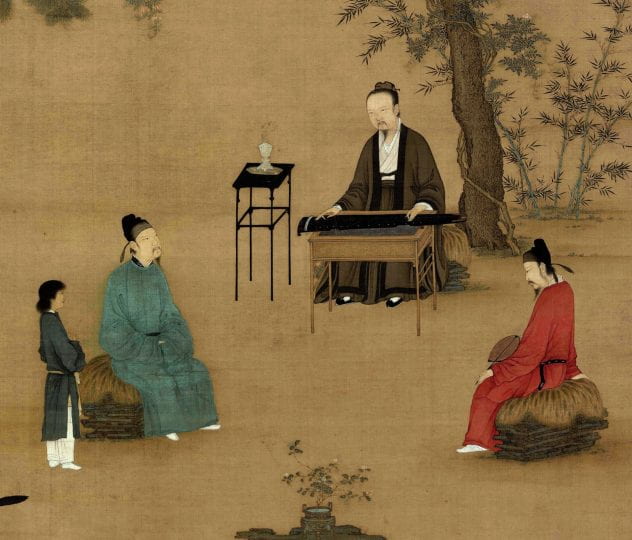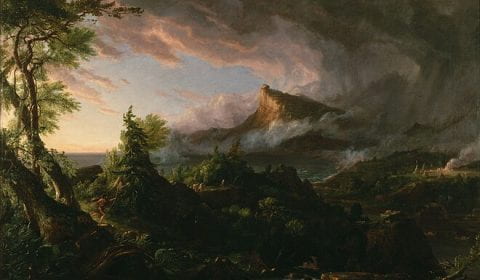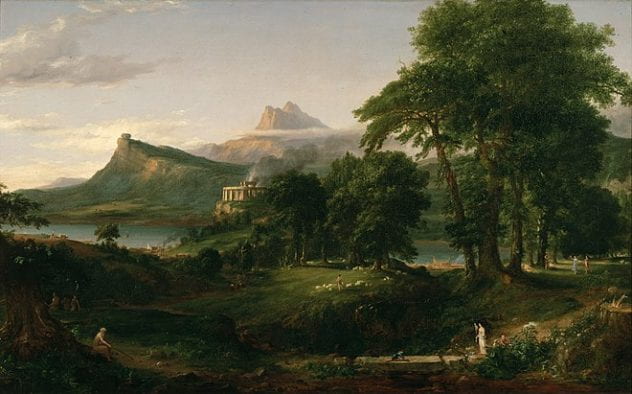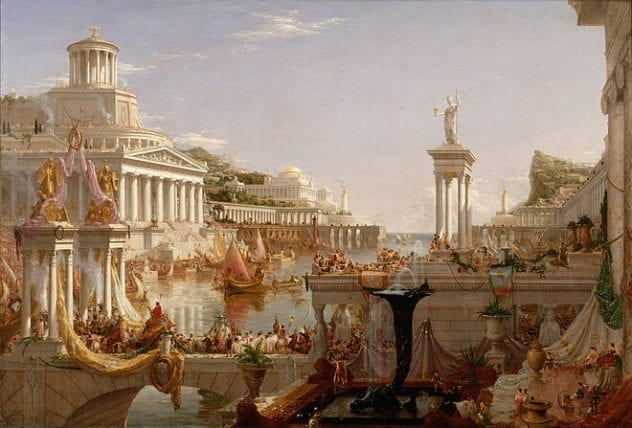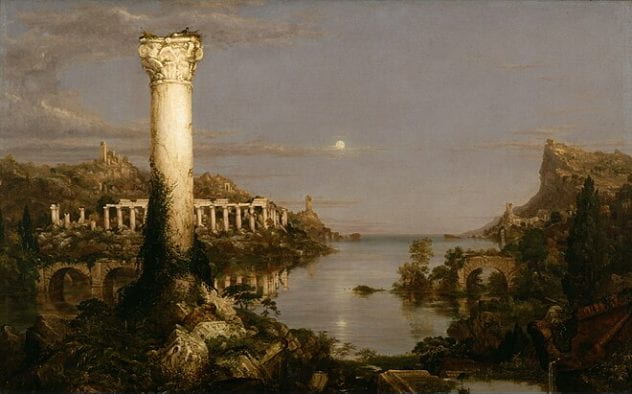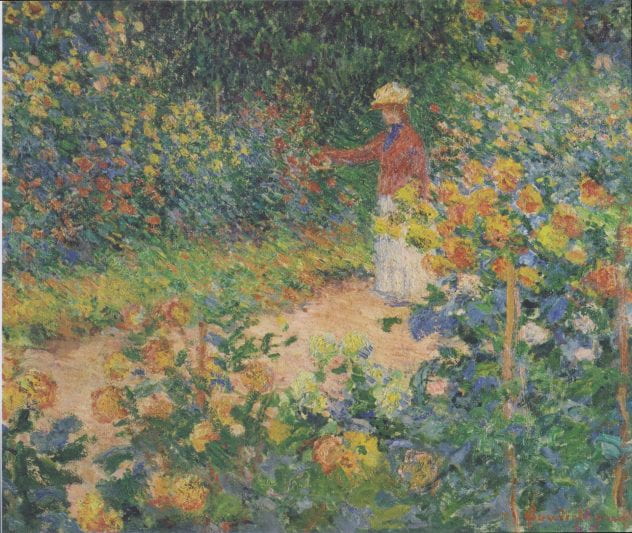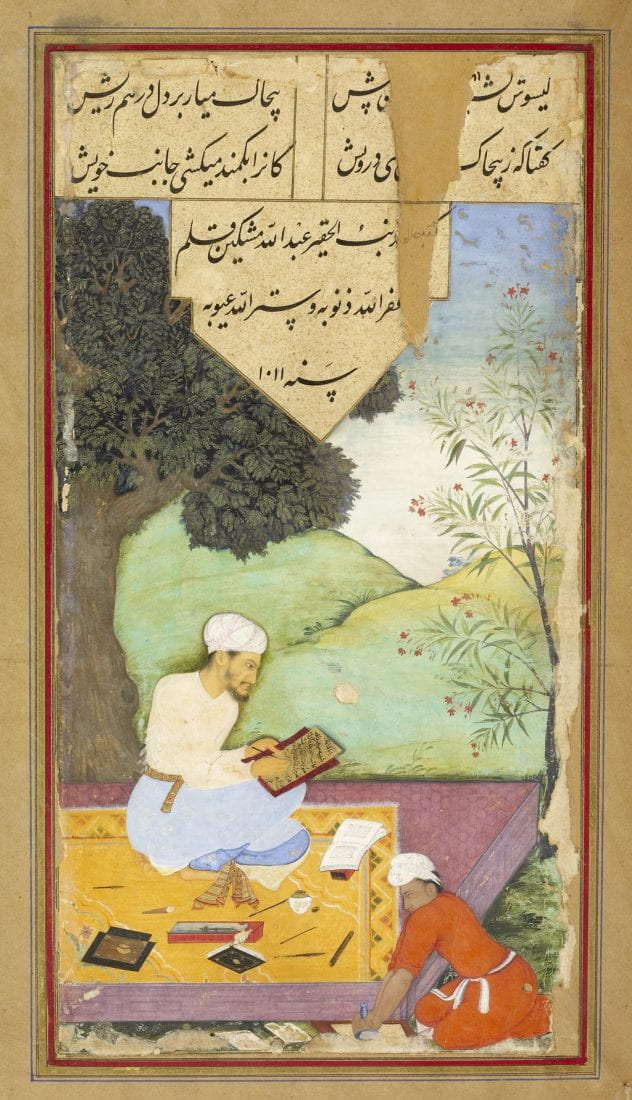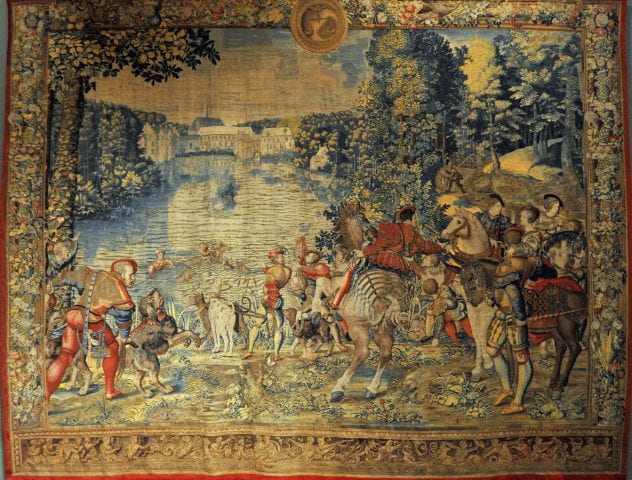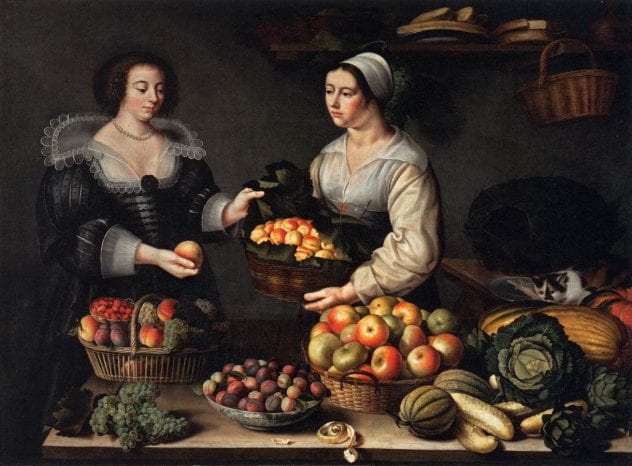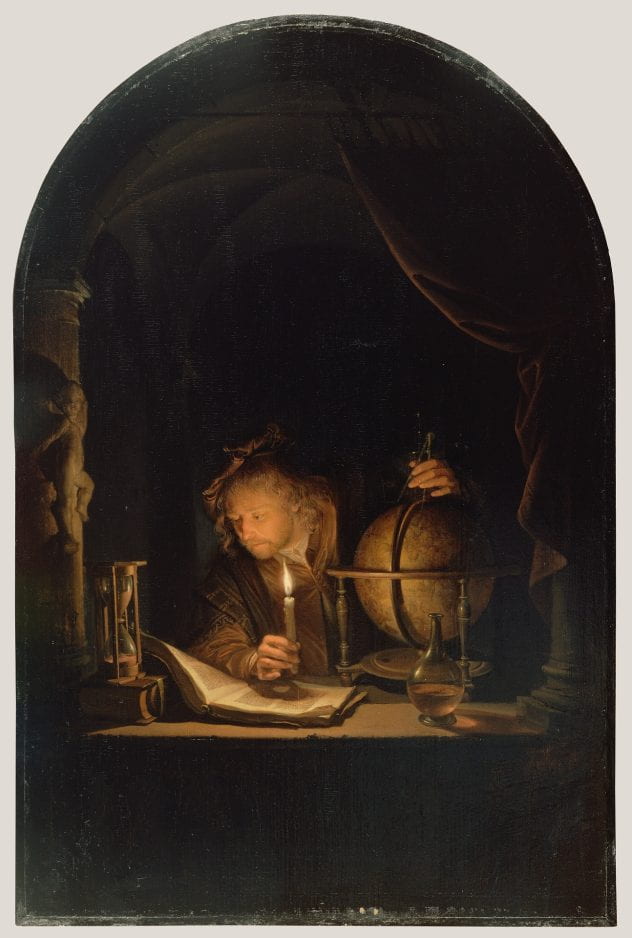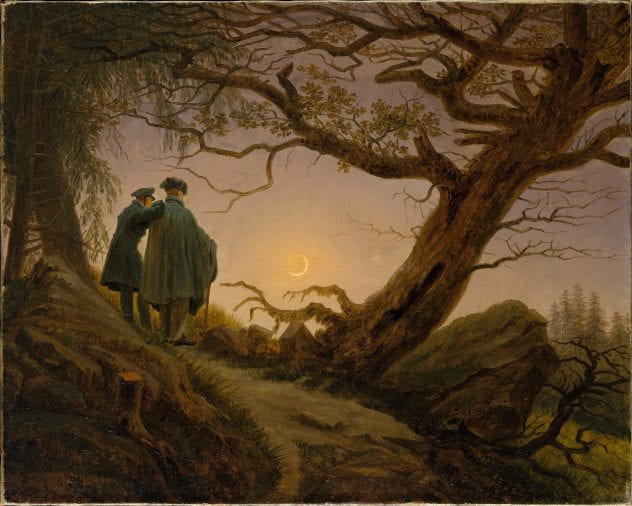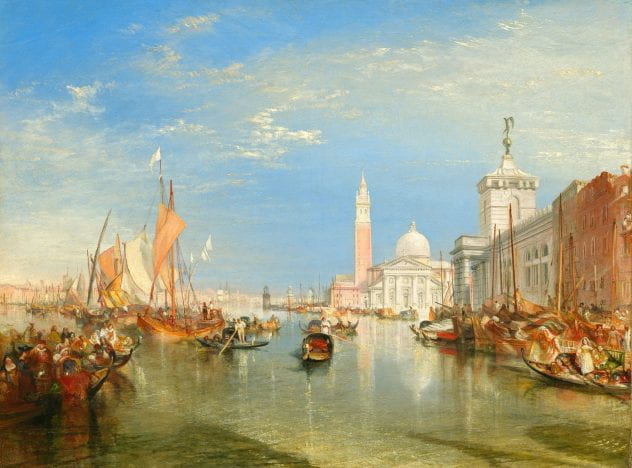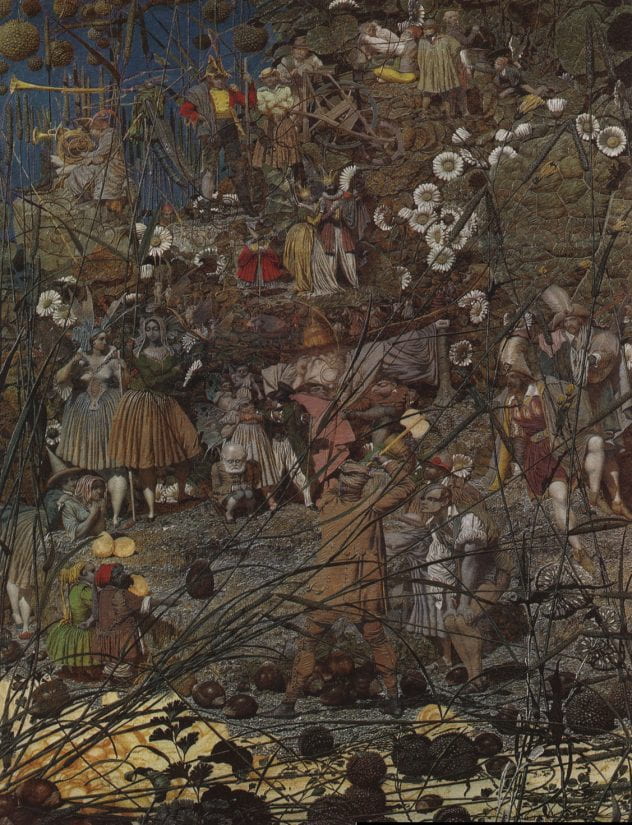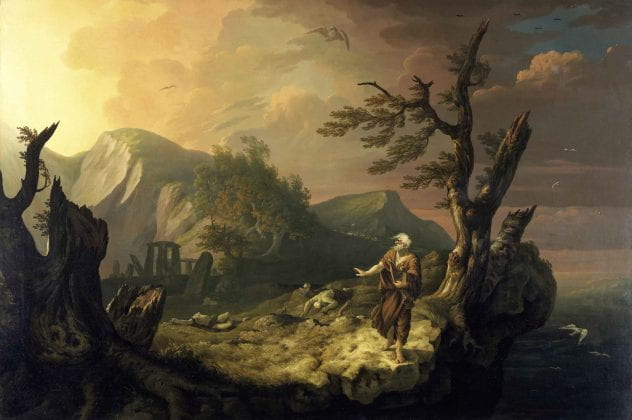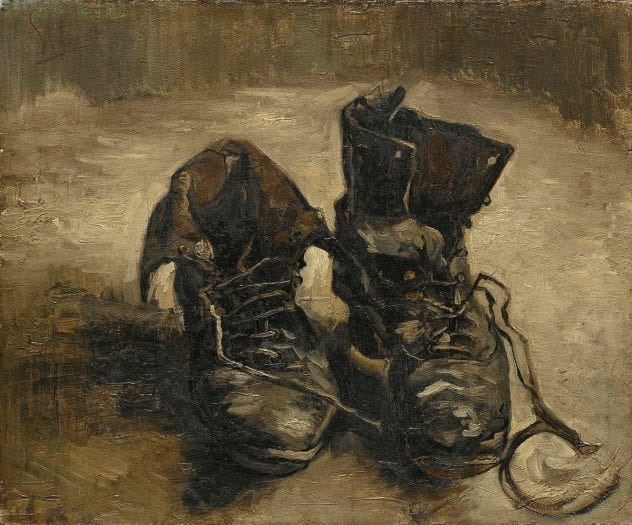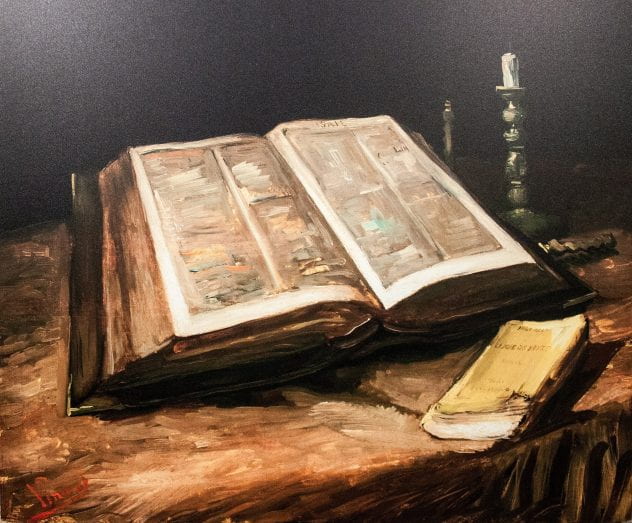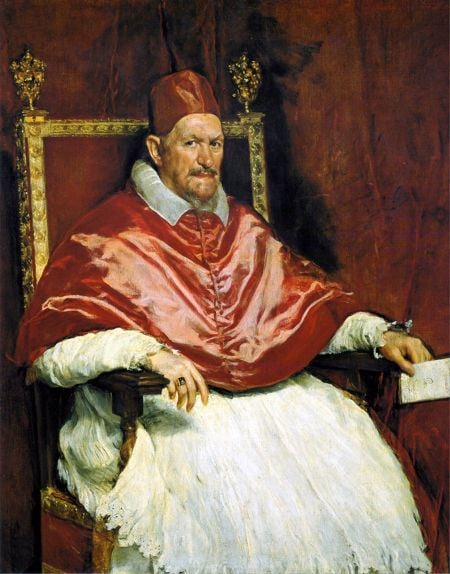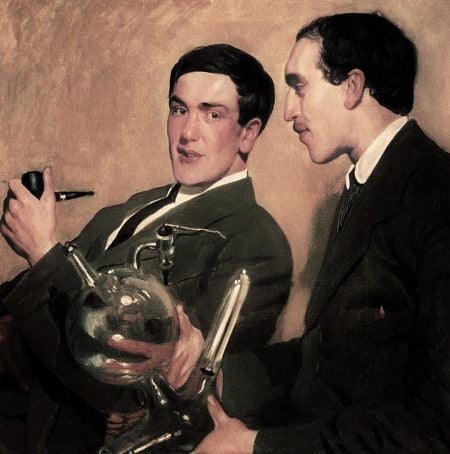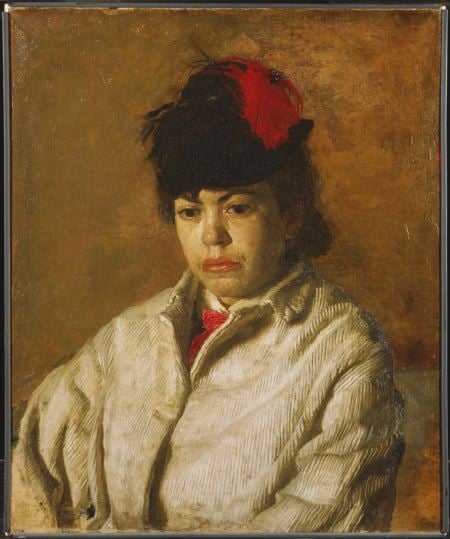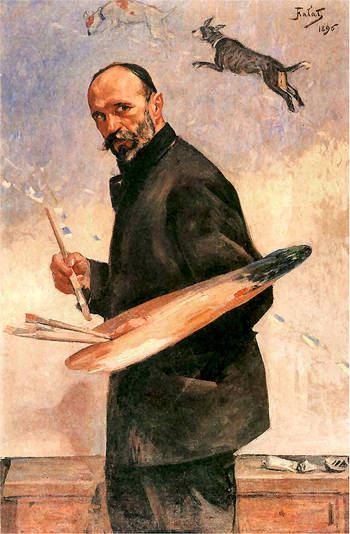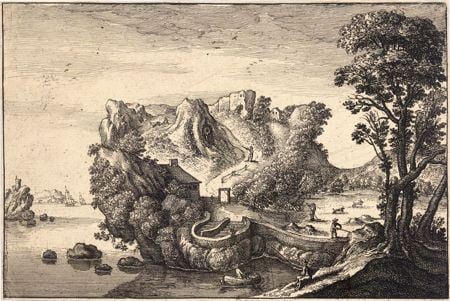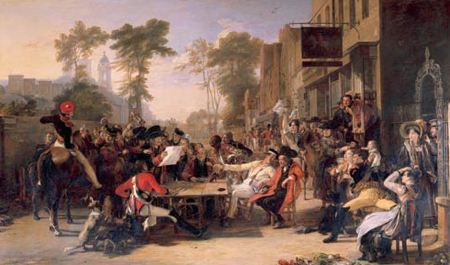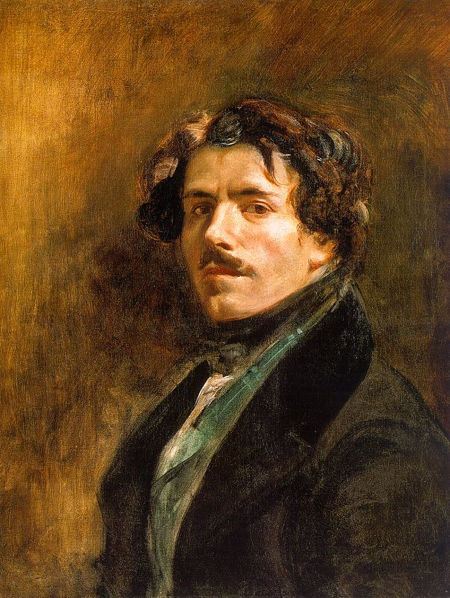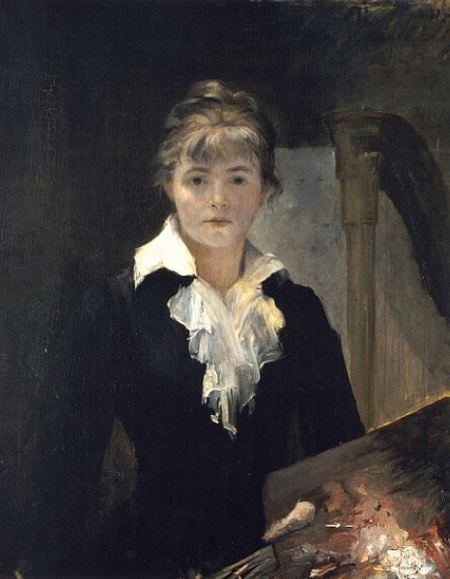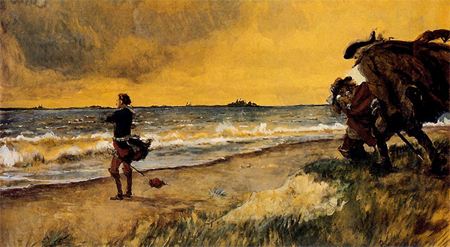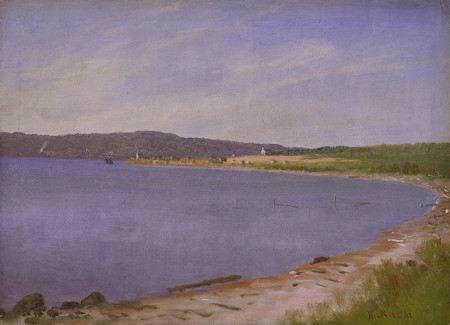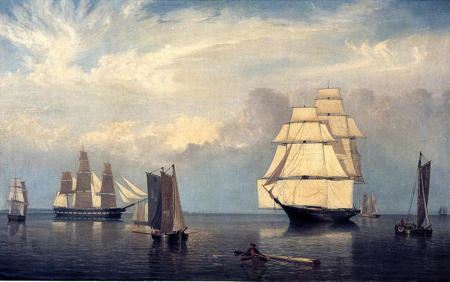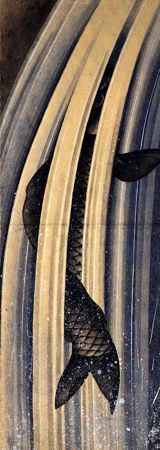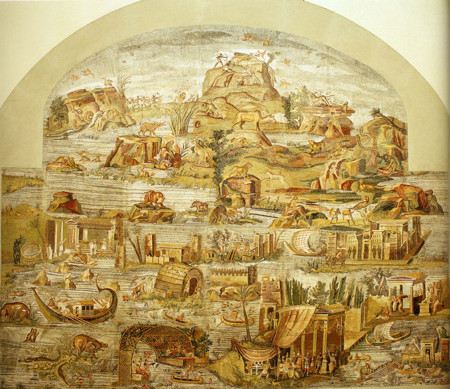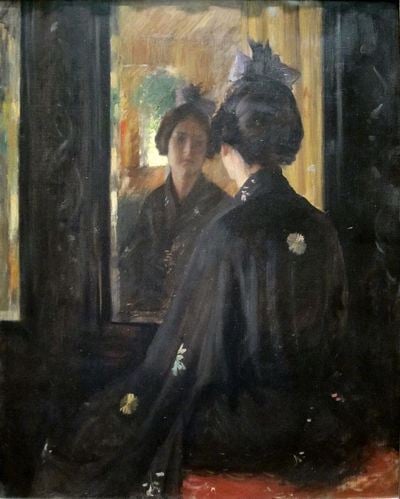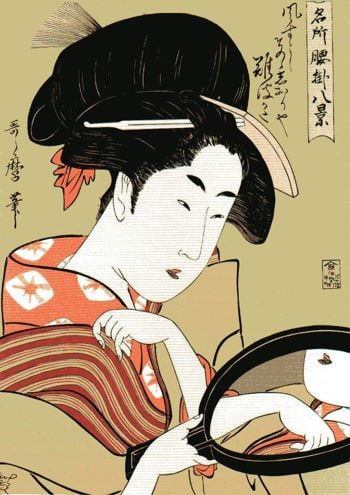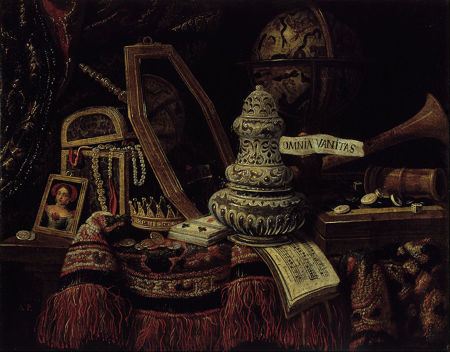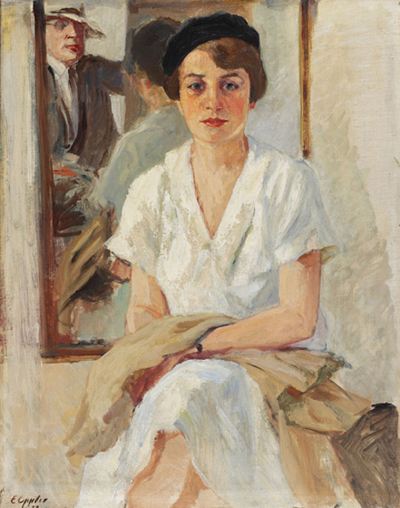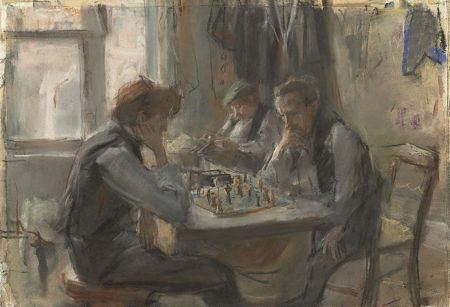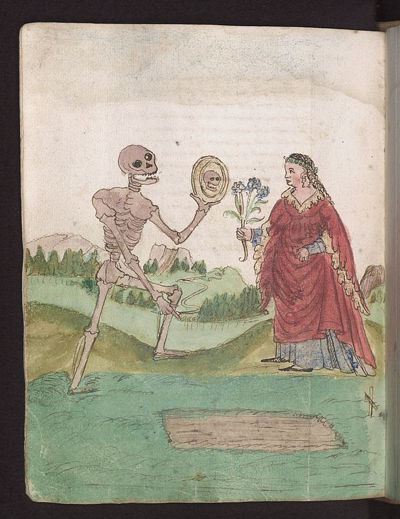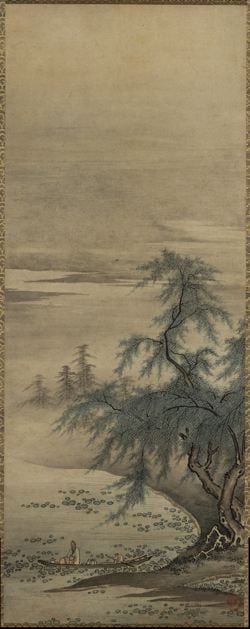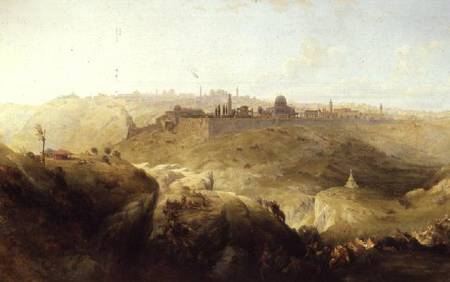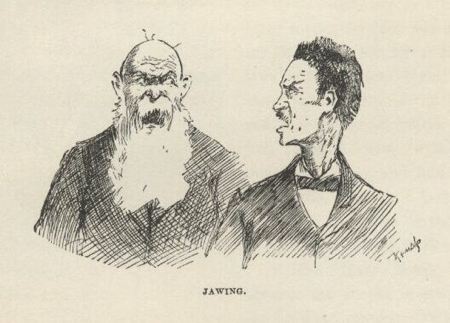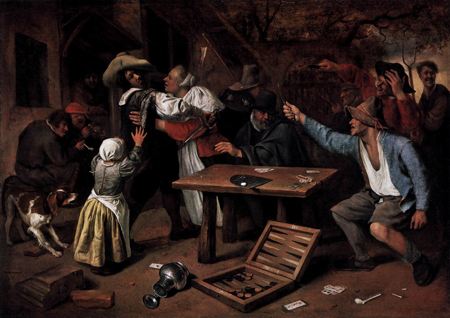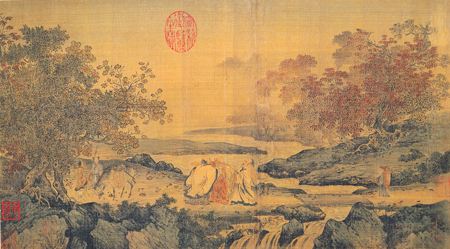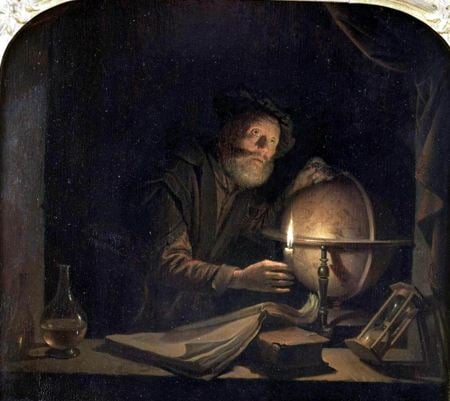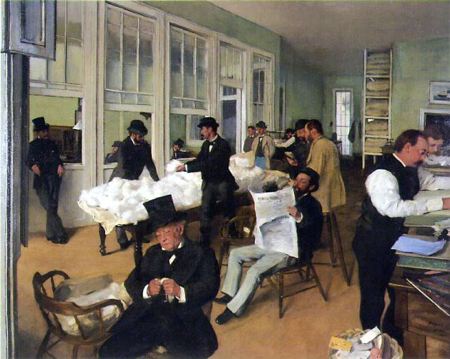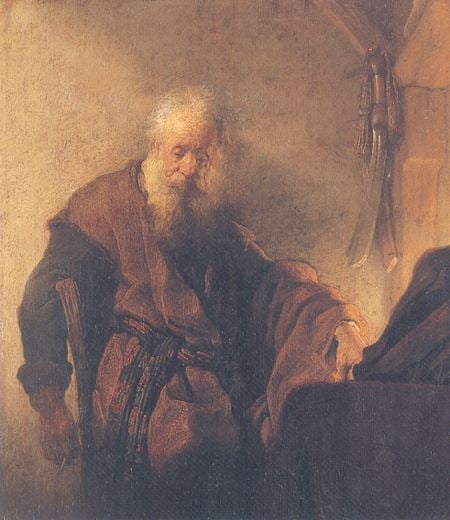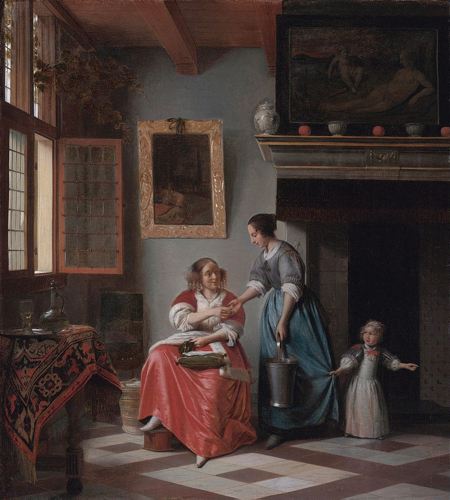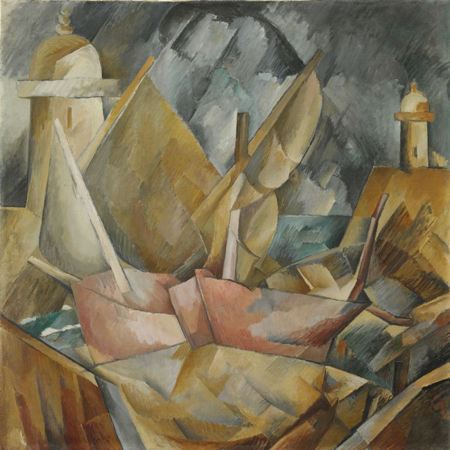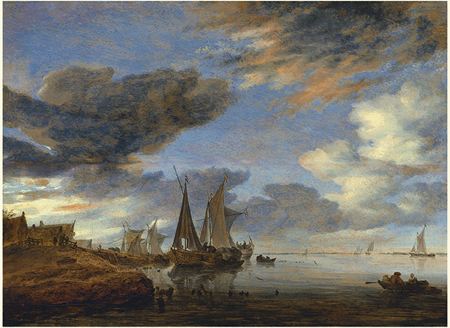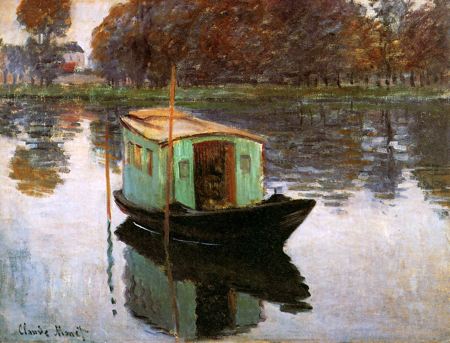“Comfort Ye My People”
From The Gospel Messiah (Too Hot to Handel)
George Friedrich Handel
Marin Alsop and the Colorado Symphony
Orchestrated by Bob Christianson and Gary Anderson
Art and the Unexpected
Northern Lights
Anna Boberg,
https://en.wikipedia.org/wiki/Anna_Boberg#/media/File:Northern_Lights,_by_Anna_Boberg.jpg
Maria Popova wrote about John Cage in “Nothing: The Illustrated Story of How John Cage Revolutionized Music and the Art of Listening. “The essay focuses on Cage’s composition “4’33”. The composition was written for piano, but I have seen it performed on the violin as well. In this piece of music, the pianist sits down at the piano, or the violin, or whatever instrument the piece has been orchestrated for, and does nothing for four minutes and thirty-three seconds. The fact that the piece has been orchestrated for different instruments suggests that silence sounds different on different instruments as well as in different places. The article asks us to consider what is music and silence and if they can be the same. It asks, what is the nature of silence? The music of Cage’s piece is created by the place and the people in that place. As there is no perfect vacuum, no space totally devoid of air, is there a space totally devoid of sound? First “performed” by the “virtuoso pianist David Tudor in a barn-like concert hall in Woodstock, New York — four minutes and thirty-three seconds of pure silence, suddenly rendering musical the ambient sounds of ordinary life.” And those ambient sounds are everywhere different. One thing the history of this composition teaches us is that silence can be copyrighted. The rock composer Mike Batt of the rock group “The Planets” was sued for copyright infringement. His song “One Minute Silence,” it was alleged, was stolen from Cage’s 4’ 33”. Batt paid a pretty large sum of money to settle the suit; it would seem it is the idea behind the composition as much as the composition itself that is copyrighted. I have a Nitty Gritty Dirt Band CD that, as you might expect, goes silent after what was listed as the last song. But I was working while listening and I couldn’t put on another album right away and after a minute or two another song, “The Weight,” played that was in fact the last song. The “silent track” unfortunately was not listed on the albums list of songs, and neither was “The Weight,”, so how was one to know? Perhaps to list the silent track would cause copyright problems.
But silence is different everywhere. When I work, I work in silence because it is easier to concentrate. But I am never really in silence. I hear the sounds of my fingers on the keyboard. I hear birds in the yard. I hear the wind in the trees. Wallace Stevens captures this kind of silence in “The Idea of Order at Key West”:
If it was only the dark voice of the sea
That rose, or even colored by many waves;
If it was only the outer voice of sky
And cloud, of the sunken coral water-walled,
However clear, it would have been deep air,
The heaving speech of air, a summer sound
Repeated in a summer without end
And sound alone.
In the poem a woman is singing, but Stevens is describing the sounds absent the woman’s voice. He is dismissive of these sounds, suggests it is the woman’s voice that brings them into being. But the sound of the silence as described by Stevens is beautiful in itself. It might be what we would hear if Cage’s 4’33” were played at this beach in Key West. Sometimes we take the sounds of silence that surrounds us for granted, we are dismissive of them. If we think about Cage’s composition, it suggests there is more to most things than we realize when we think of them simply. The article said, “For Cage, the questions were always the important part, because the questions were more interesting than the answers. The questions often led to more questions, instead of answers.”
The music at the top illustrates another way music can take us by surprise. The song is from Handel’s oratorio The Messiah. It is a piece of music most are familiar with, and this vocal is one most have heard. But instead of the baroque orchestrations and vocals we expect to hear; it has been orchestrated for a gospel band with gospel choir and soloists. We hear saxophones, organs, trumpets, guitars and such instead of strings, woodwinds, and brass. The conductor, Marin Alsop, wanted to perform The Messiah in a way that would bring people to their feet the way the original performances did. She thought orchestrated for a gospel band and chorus the music would be more rousing to a modern audience. There is more to a piece of music than the notes.
The Third of May
Francesco Goya
In “Art Isn’t Supposed to Make You Comfortable” Jen Silverman writes of a book she read in college:
When I was in college, I came across “The Sea and Poison,” a 1950s novel by Shusaku Endo. It tells the story of a doctor in postwar Japan who, as an intern years earlier, participated in a vivisection experiment on an American prisoner. Endo’s lens on the story is not the easiest one, ethically speaking; he doesn’t dwell on the suffering of the victim. Instead, he chooses to explore a more unsettling element: the humanity of the perpetrators.
This merits thought. We should care about victims and do all we can to alleviate their pain and to prevent the causes of that pain. But prevention probably requires us to pay some attention to the perpetrators, they are after all the ones that need to be changed if the world is to be improved. She goes on to say, “When I say ‘humanity’ I mean their confusion, self-justifications and willingness to lie to themselves. Atrocity doesn’t just come out of evil, Endo was saying, it emerges from self-interest, timidity, apathy and the desire for status.” What Hannah Arendt called the “banality of evil.” She said this of Adolph Eichmann, the Nazi war criminal. Arendt said he was a “normal man,” a “boring man” who was “only looking for advancement.”
Silverman goes on to talk about a visit she made to a web site that trashes books the contributors to the site do not like, books like Lolita, Paradise Lost, and Rabbit Run. The reviewers did not like the books because they revolved around characters the readers thought despicable and why do we need to read about such people. Silverman suggests why, “Here on my screen was the distillation of a peculiar American illness: namely, that we have a profound and dangerous inclination to confuse art with moral instruction, and vice versa.” Of course, there is a sense in which these books do provide moral instruction, in that they confront us with behaviors we as a culture need to address. It is in this sense that literature and art ought to work:
But what art offers us is crucial precisely because it is not a bland backdrop or a platform for simple directives. Our books, plays, films and TV shows can do the most for us when they don’t serve as moral instruction manuals, but rather allow us to glimpse our own hidden capacities, the slippery social contracts inside which we function, and the contradictions we all contain.
Literature opens our eyes to the world that is. Many, maybe most, Utopian books point out not what the best possible world looks like, but the shortcomings to the best possible worlds we imagine. This is an important function of all art, it challenges us, makes us think about things, to not take the good things, the beautiful things of our world for granted and consider ways to fix what is problematic. It also helps us understand that what is problematic for us may not be problematic, or harmful, for others. It helps us consider how we accommodate everyone.
Cage draws attention to what silence sounds like and we should consider if this is what silence should sound like and if it is we ought to take an interest in preserving that sound. How has the sound of silence changed over the years since Cage composed 4’33”? There is an old Loving Spoonful song, “Summer in the City.” Part of the song’s accompaniment is jack hammers pounding in the background. If 4’33” were played in the city, jack hammers and police sirens and the like would be part of the ambient sound. Should those sounds be preserved? How would life in the city change if these sounds were eliminated? There are sounds that are unpleasant but are also important to the maintaining of a society. Spike Jones used to orchestrate pistol shots that fired in the key of the song his band was playing. He did this with other kinds of racket as well. Noise can be musical. Not all background noise is as pleasant as the ambient sounds surrounding a barn or a concert hall. But they may be necessary none the less. Spike Jones’ band suggests there are few sounds that can not be made musical.
All the arts much of the time draw our attention to what should be preserved and what should be changed. And not all of what should be preserved is pleasant.
What I find to be important in books is how they help me to see more clearly what human experience is made of. I enjoy Jonathan Swift, Mark Twain, Ben Jonson, and others like them. They make us laugh, but, if we are paying attention, we realize the laugh is on us. The humor and jokes entertain us, the thoughts they provoke educate after a fashion. I think if the con artists in the film The Sting are placed alongside the con artists in The Adventures of Huckleberry Finn, they illustrate this point. In the film I find myself liking the con men, in part because they are conning someone who deserved conning. When we first encounter the King and the Duke in Huckleberry Finn, they are comic characters, and we laugh at what they do. Those that are conned are either foolish or cruel and, in a sense, deserve what they get. But they then con three young sisters who have been orphaned. These men try to con them out of everything they have and leave them to make their way in a world that offers them few ways of taking care of themselves. The kind of things the Duke and the King are doing are not unlike other things they have done, but in this instance, they are doing real harm. We are stopped up short if we are paying attention. What these men do to the sisters isn’t funny. I laughed when the harm being done was to people who deserved the harm. But these young girls did not deserve this. Twain forces us to consider if it is acceptable to cause suffering if it is to people we do not like; that hurting others is only a bad thing if the people being hurt, in our view, don’t deserve to suffer. But who are we to decide who does and does not deserve to suffer.
Perhaps reading, or viewing, this way, takes some of the fun out of it, but I believe Twain is inviting us to confront our behavior and the things we condone, if only by laughter. At the end of The Sting, I am on the side of the con artists and pleased they won. But what of the other people they con? Are those as deserving of what happens to them? At the beginning of the film a mobster, whose job it was to deliver the day’s take to the boss, is tricked out of the money he was supposed to deliver. As a result, he was killed. He was a gangster, he probably deserved it, but somehow, I am troubled by it. Also, they were going to con the first person they encountered, it only happened to be a gangster, but it could have been anyone. Perhaps the film maker wanted the audience to be troubled. But I don’t think so.
The City of the Future
Frank R. Paul
In another book from another time, during the third voyage of Jonathan Swift’s book Gulliver’s Travels, “A Voyage to Laputa,” the wife of Laputa’s king runs away. Laputa is an island that floats above the surface of the land. The king, like most of the men on the island, is totally self absorbed. He treats his wife like a piece of furniture. So, she goes to the land below. She has a relationship with a footman who beats her. When she is captured and returned to her husband and the floating island, she runs away again to be with the footman who beats her. This is of course a very sexist joke, the woman is too stupid to stay where it is safe, even if it means being totally ignored.
But it could be argued that being treated like a piece of furniture is a kind of emotional, psychological abuse that denies her humanity. We all understand that physical abuse is abuse. But we can be dismissive of other kinds of abuse, like emotional and psychological abuse. Swift does not have to make a case that physical abuse is abuse, everyone knows and acknowledges that. But by seeing her return to the land where she is beaten, we are compelled to consider the emotional and psychological abuse she is trying to escape as abuse as well and that of the two she prefers the physical abuse. If she had stayed with the king, we would probably dismiss the form of abuse she suffers and think no more about it. We might accept that the abuse she suffers on the island is a valid reason for leaving the floating island, but why return to the footman. What else is she to do? On the island she lived an empty meaningless life where she was given nothing to do. When she reaches the land, she has no skills and no way to support herself. And even if she did have skills, at this time in history she may not have been given the freedom to put them into practice.
Swift, I am sure, was probably as sexist as most men of his time, and he probably intended the sexist joke as a sexist joke; he certainly wasn’t a feminist. It is not unlikely that I am reading all this into the text. But it is the text that suggests these thoughts, to me at least. Swift was a Humanist, and as a Humanist he may have considered thoughts like these; that people, men and women, need to do more than breath the air and take up space. Swift as a writer effectively used irony to provoke his readers. Maybe here he was being a bit provocative. These books entertain, but they can do more than that for the reader that is open to what the entertainment brings along with it.
Some years ago, Azar Nafisi wrote a book, The Republic of the Imagination. She is an immigrant from Iran. In the introduction she writes about a conversation she had with another émigré from Iran. He said American readers didn’t understand their own books. In Iran he did not have the freedom to read books Americans take them for granted, if they take them at all. He said, “These people are different from us – they’re from another world. They don’t care about books and such things. It’s not like Iran where we were crazy enough to xerox hundreds of pages of books like Madame Bovary and A Farewell to Arms.” Azari didn’t agree with the man, but perhaps there is something to what he says. Nafisi went on to point out that those that risk torture to read, listen to, or watch works of art “hold the whole enterprise in an entirely different light.”
In a place where the arts are available to anyone anytime they want to pursue them, for as long as they want to pursue them it may be easier to take the arts for granted. We are surrounded by them. People who do not like an artform, opera for example, may think those that like that artform odd, or elite, but no one’s right to indulge that artform is infringed. I can read Shakespeare or Marvel Comics, listen to classical or popular music, look at the paintings of Rembrandt or graffiti with no problems.
I read once of miners in Britain that maintained libraries on their work sites, libraries of Greek and Latin literature, as well as more contemporary thinkers and story tellers. Perhaps things are still a bit that way, that miners in this place and time are also stimulated by pursuits of the mind and imagination. Mind and imagination are wonderful things. Why did I find it surprising that miners once upon a time would value this when today the perception of miners is that their interests do not go far beyond sports and country music. This is not true of course, but popular culture likes to generalize and make it seem true. There is an old movie, The Corn is Green that revolves around a coal miner with an aptitude for scholarship who at the end of the film is sent off to college. The impression is that this miner is unlike all the others and all the others lack these intellectual gifts. Yet the miner’s libraries were prevalent at the time this film was set, which suggests these impressions may be inaccurate. The film does suggest that all miners’ children should have the opportunity to learn and prepare for college. That lack of training is not the same as the inability to be trained. These children did not turn their backs on education, they weren’t given the opportunity to get an education.
It seems at times we herd ourselves into our different “elites” and resist the crossing of elitist lines. Certain aspects of mind and imagination seem inappropriate, and we drive ourselves into our corners where we each pursue the avenues of thought that are open to our station. But St. Paul, who wrote two thirds of the New Testament was a tent maker. Grover Washington Carver began as a slave. Aphra Behn began as a spy who became a writer when the king refused to pay her for her work as a spy. The novelist Jack London began as the “prince of the Oyster pirates.” Charles Ives and Wallace Stevens were insurance salesmen when they weren’t composing music or writing poetry. Robert Frost was a farmer. The Bronte sisters were governesses, Jane Austen and Emily Dickinson were stay at home daughters. Zora Neale Hurston was n Anthropologist. Walt Whitman suggests we contain multitudes (or at least that he did) so why not explore more of those multitudes.
The Kingdom of the Fairies
George Méliès
Star Film
The film is from the silent era. Because color film had not yet been invented, each frame of the film had to be colored by hand. At 24 frames per second that must have been an arduous process. The film as originally presented was silent, there was not music playing behind it as there is in this video. If you want to experience the film as the original audience did, turn off the sound. With the sound it takes on many of the characteristics of a ballet. Denis Villeneuve, the director of the most recent Dune movies, in an interview said he thought film should be viewed without sound, because the visuals for him are what is most important. He thought an earlier film version of Dune was brilliant when viewed as he viewed it without sound. It was the acting in the film that resulted in its poor reviews and ratings and perhaps if viewed visually, without sound, it is a more impressive film.
Perhaps, Cage in his 4’33” was trying to help audiences be more comfortable with silence. Experienced in silence many may lose interest in this film and turn it off. But consider the color. It is not just that it was a difficult and time-consuming process to make this a color film, but that it is visually stunning. Remember, films are also called “movies” a word derived from what they were originally called “moving pictures,” because that is what they were, pictures that moved. I suppose being new, the magic of a moving picture, even if left in black and white, might be more engrossing for those that had never seen pictures move than they are for us. Imagine John Cage’s 4’33” playing for 16’44” as the soundtrack for the film; we can take Cage’s music into a new dimension. It might make it easier to watch with Cage’s music playing in the background. This may be an instance of art making us uncomfortable, but not because the subject matter is uncomfortable, but because the times and the form have changed. To view this, we need to look through the lens of the original audience. It is not the message but the medium that is uncomfortable. We have to grow accustomed to a different way of experiencing delight.
Three Philosophers
Giorgione
What I find interesting about this painting is that it is of three men who live lives of the mind, who think deeply and should have much to share. But each one is engrossed in his own thoughts and seems totally self-absorbed. They also look to come from different cultures and different times. The first, starting from the left, appears to be European and a Renaissance philosopher. The second appears to be from a Persian or Arab culture, that was responsible for preserving Classical philosophy, science, math and literature during the “Dark Ages.” The third appears to be a Greek holding a document in his hands that looks scientific or mathematical, representing classical thought. It also suggests the route Classical thought took back into Europe during the Renaissance. It was lost in Europe with the rise of Christianity. However, it flourished and was preserved in Arab culture. As a result of European trade Classical thought found its way back into Europe. Still, the philosophers are not talking to each other.
In the “Dark Ages” Classical art, literature, and culture was shut out (though not to the extent that we often imagine) and the focus of education was on theology. As a Christian I find this period rich in a kind of thought, but without competing points of view and ways of thinking, I think theology became, if not weaker, disengaged from the arguments of its time in the rest of the world. I appreciate that Augustine kept Plutonic thought, Plato’s way of thinking, alive, and it was Augustine’s classical education that made him a Platonist. But it was here perhaps that Liberal Arts education first came under attack. It created a different kind of silence, the silencing of views that stretch one’s thoughts by challenging them. It was worse than avoiding those that think differently, because different points of view were muted. But wherever there is silence, something will fill it, heresies of one kind or another. The argument over making education focus on what we need and not on other “unnecessary things” began. We can also see how the definition of necessary things changes with time. Today necessary things are not theological, but the sciences and mathematics and other useful avenues of instruction. It is still Art, Literature, Philosophy, and Culture that are seen as unnecessary, at least for those whose profession does not require these areas of study. It goes beyond this a bit in that unnecessary things are defined as those things that are unnecessary for one’s planned profession, which assumes students know what their profession will be before they enter college.
Harun Kücük and Ezekial J. Emanuel, define liberal arts instruction in their essay “Higher Education Needs More Socrates and Plato”:
By liberal arts, we mean a broad-based education that aspires to send out into society an educated citizenry prepared to make its way responsibly in an ever-more complex and divided world. We worry that at many schools, students can fulfill all or most of their general education requirements and take any number of electives without having had a single meaningful discussion that is relevant to one’s political life as a citizen.
Over the past century, what made American higher education the best in the world is not its superiority in career training, but educating students for democratic citizenship, cultivating critical thinking and contributing to the personal growth of its students through self-creation. To revive American higher education, we need to reinvigorate these roots.
They contrast this with the kind of education found in other parts of the world and that some advocate for the United States, “In Europe and many countries elsewhere, colleges and universities have undergraduates specialize from Day 1, focusing on developing area-specific skills and knowledge. College students are trained to become doctors, lawyers or experts in international relations, English literature or computer science.” In America, “Historically, students arriving on American college campuses spent a majority of their first two years taking classes outside their projected majors. This exposed them to a common curriculum that had them engage with thoughtful writings of the past to develop the skills and capacity to form sound, independent judgments.” This produces graduates that can think deeply and converse eloquently. It is true that doctors need to know medicine and lawyers need to know law, but we all need to know the workings of a democratic society and its institutions and how to talk intelligently and respectfully with those we have differences on politics and policy and values.
John Henry Cardinal Newman in The Idea of a University (first presented as lectures in 1852 and published in 1873) wrote, That the university “is a place of teaching universal knowledge. This implies that its object is, on the one hand, intellectual, not moral; and, on the other, that it is the diffusion and extension of knowledge rather than the advancement.”
But the urge is for education to be practical. President Obama suggested once that he found it difficult to understand why someone would pursue an advanced degree in Art History. He walked it back a bit, but this is a prevalent view in our society. Why pursue something so useless, at least in the economic sense anyway. The arts, to be appreciated, require us to look into art’s objects and consider their beauty and what they are trying to communicate, that, among other things, beauty has value. One of Thomas Aquinas’ proofs of the existence of God is “Gradation,” that there is a range to things. There is good and there is evil, there is beauty and there is ugliness, there is truth and there is falsity, and so on. There is also a range when these values are considered individually. Two things may be beautiful but one may be more beautiful than the other and we may not always agree as to which is the more beautiful. Also, what is true is different for an atheist than it is for a theist. These differences are not reconcilable but that does not mean we cannot talk respectfully and intelligently about how we each approach these differences.
Three Laughs at the Tiger Brook
Anonymous
https://en.wikipedia.org/wiki/Three_laughs_at_Tiger_Brook#/media/File:Huxisanxiaotu.jpg
The painting is from China and is of three men who are laughing. There is a story behind this painting. One of the three men is a Buddhist, one is a Taoist, and one is a Confucian. They were vigorously debating their different views, each trying to convince the others of the superiority of his beliefs. When they cross the bridge, they realize they had been in a tiger infested bit of land. They laugh because their debate kept their attention off the danger they were in. They were discussing deeply held beliefs and they, being theologians of sorts, enjoyed talking about those beliefs. This made their trip across this land of tigers pleasant instead of terrifying. They were in mortal danger the whole time. But because their talk made them unaware of where they were they enjoyed the journey. In a sense, we are in dangerous times and if we could learn to talk to each other and enjoy talking about our differences, the time will feel, and as a result, perhaps be, less dangerous. While discussing our views as friends we are not beating up each other.
We see this the world over, not just in America, that people cannot talk to each other. We see forces that want to silence those whose views differ from theirs. We see people defining tyranny as not getting their own way. In America, presidents are declared incompetent by their opponents if they pursue an agenda that doesn’t advance the agendas of their opposition, if it isn’t conservative, liberal or moderate enough as the case may be, like suggesting George Bush (take your pick which one) was a failed president because he didn’t advance a liberal enough agenda or Joe Biden is a failed president for not pursuing a conservative enough agenda. We should enjoy our difference because, in fact, that is where our true strength lies. For a diverse nation to be safe and strong it must accommodate those diverse views. When a democratic republic cannot do that, it is marching towards autocracy. I was born when Truman was president. Between Truman and Biden there have been fourteen presidents, seven Republicans and seven Democrats, that is what democracy looks like.
Kücük and Emanuel end their article:
Liberal arts education is not value neutral. That is why it is indispensable today. Freedom of thought, critical reasoning, empathy for others and respectful disagreement are paramount for a flourishing democratic society. Without them, we get the unreasoned condemnations so pervasive in today’s malignant public discourse. With them, we have a hope of furthering the shared governance that is vital to America’s pluralistic society.
There are people whose opinions are radically different from my own that I talk to, whose company I enjoy, and views I respect, and this feeling is mutual. And remember “liberal” when speaking of liberal arts and liberal democracy is not political, but identifies a free society, one with “liberty” as opposed to totalitarian or monarchal societies that place limits on liberty. In American society all politics is, in this sense, liberal. We are all free to be politically liberal when the government is conservative and conservative when the government is liberal. A liberal education helps us realize that we do not truly know what we believe and why believe it if we do not understand the opposing views and why we do not agree with those. Much of this comes down to conscience and core beliefs that are not and ought not be easily changed. Part of the problem is that views rooted in conscience puts other views in an unconscionable light. And if we are all to live freely and peaceably with a clear conscience, we have to learn to bridge our difference.
As a Christian I have to realize that non-Christians will find my views untenable, in fact other Christians whose theology differs from mine may also find my views untenable. Jesus told His followers they had to love each other and if someone outside the faith did not see that love, the outsider is free to conclude Christianity is not real, is not true (By this all people will know that you are my disciples, if you have love for one another.” John 13:35). It might also be suggested that people will know we are a democracy by the love we have for one another. This is something we see in practice whenever there is a disaster of one kind or another, as when everyone rallied around New York City after 9/11 whatever their politics and when everyone rallied around Louisiana and the rest of the gulf states after Hurricane Katrina. We help our fellow citizens when they are in trouble. When storms come to Massachusetts, I see trucks from Kentucky and Tennessee helping us with the cleanup. Though we may talk disparagingly about one another much of the time, we are there for each other in our times of need. That is what love looks like much of the time. We can look at the Good Samaritan as a Conservative Republican helping a Liberal Democrat he found in trouble by the side of the road. In the Cotton Patch Gospel, the man on the road is a white man and the man who helps him is black. This version of the Gospels was published in 1957, as the Civil Rights Movement was gaining momentum. Martin Luther King, Jr’s “Letter from Birmingham Jail” for example, was published in 1963. It was also, like many paintings of Gospel events from the Renaissance, set in the time it was written. “The Letter to the Romans” for example, is called “The Letter to the Washingtonians.” Cage’s 4’33” was about hearing silence differently, but there are many other things we need to hear and see and do differently
The Good Samaritan
Vincent van Gogh
https://en.wikipedia.org/wiki/Conscience#/media/File:Vincent_Willem_van_Gogh_022.jpg







